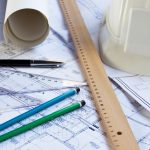Graceful, flowing, contemplative, and strong. Arches have been incorporated into stunning and timeless examples of practical architecture for thousands of years, and probably thousands more to come.
One of the most graceful yet functional architectural elements is the arch. Bridges, buildings, tunnels, advertisements, monuments, even temporary construction projects all utilize this element. Arches are especially useful in architectural design. They lend smooth, top-to-bottom transitional appearances while implying strength and stability. It is hard to imagine what the developed world would look like today without the ingenuity of this simple yet extraordinarily useful design concept.
The arch as a natural form has been apparent in the form of eroded rock formations for eons. Its appearance as a man made construction element is traced back roughly to the second millennium B.C. During this time period it is found mainly as an embedded supporting element in tunnels, doorways, and drains. This probably resulted from observation of the natural form and the realization that while arches can resist great compressive loads, they also need significant lateral base support to prevent blowout. After this period Roman architects and engineers, influenced by the assimilated Etruscans, are generally credited with developing arches as full-fledged structural and design elements in construction. Examples of masonry arches are legion in the Roman infrastructure, with perhaps the best known being the triumphal arch and aqueduct structures. Related structures such as vaults and domes are also attributed to this source and time period.
Functional, With Form Close Behind
Though there are several classifications for arches based on their geometry, all arches have several elements in common. They are symmetrical structures which span open spaces using only compressive loads, thus eliminating tensile stresses. Loads are applied on the outer face of the convex surface with the open space spanned by the concave surface. This arrangement works horizontally, as in a dam, as well as vertically as over an entrance. Arches can also be inverted with legs pointing upward, as used in certain foundations and tunnels, again to distribute compressive loads. Perhaps the best phrased commonality was described by Leonardo da Vinci: “An arch consists of two weaknesses which, leaning one against the other, make a strength.” From this basic geometric principle all arches are derived.
Early Roman arches traced a circular geometry for the crown with vertical supporting legs. Although not as stable as later arch geometries, many still stand for a good reason. The engineer in charge of design and construction would stand underneath the arch when the temporary fabrication supports were removed. If the work was performed properly the engineer would live to work another day. If not, well, that’s what early quality control was all about. More advanced mathematics led to the more stable inverted catenary geometry. A catenary is formed by any hanging chain or rope supported at two points; invert the shape and this is the basis for most modern arch design. Attributed to Robert Hooke (an English scientist of the 1600’s), “As hangs the flexible line, so but inverted will stand the rigid arch.” Visually, at least. All the stresses in the hanging chain are tensile, but as discussed the stresses in the arch are entirely compressive. And these stresses are distributed more stably when the legs follow the catenary curve, requiring much less lateral base support.
One of the most memorable examples of modern catenary arch design is the Gateway Arch in St. Loius, Missouri. Some of the oldest examples of constructed arches may still be found in the ancient Roman ruins of the Aqua Claudia aqueduct and the landmark coliseum. While numerous other examples exist from the intervening years, the recent Temple Expiatori de la Sagrada Família, or Church of the Holy Family located in Barcelona, Spain, is truly an impressive collection of arch design and use. Under construction since 1882 and not expected to be completed until 2026, an even casual review of the building reveals the intricate and visually appealing application of arches in architecture.


Comments are closed